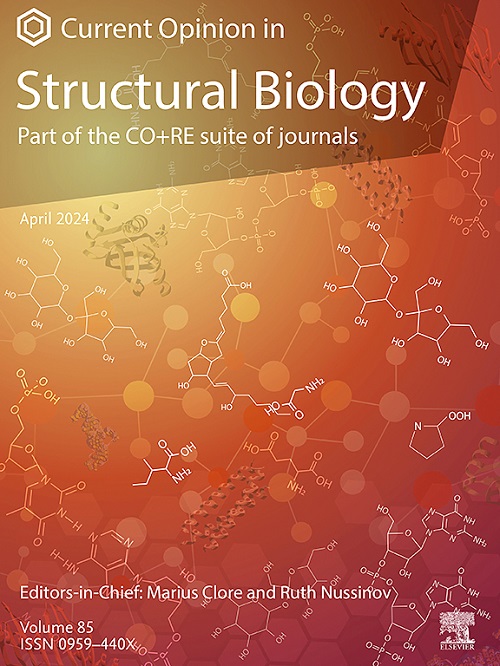Recent advances in AI-driven protein-ligand interaction predictions
IF 6.1
2区 生物学
Q1 BIOCHEMISTRY & MOLECULAR BIOLOGY
引用次数: 0
Abstract
Structure-based drug discovery is a fundamental approach in modern drug development, leveraging computational models to predict protein-ligand interactions. AI-driven methodologies are significantly improving key aspects of the field, including ligand binding site prediction, protein-ligand binding pose estimation, scoring function development, and virtual screening. In this review, we summarize the recent AI-driven advances in various protein-ligand interaction prediction tasks. Traditional docking methods based on empirical scoring functions often lack accuracy, whereas AI models, including graph neural networks, mixture density networks, transformers, and diffusion models, have enhanced predictive performance. Ligand binding site prediction has been refined using geometric deep learning and sequence-based embeddings, aiding in the identification of potential druggable target sites. Binding pose prediction has evolved with sampling-based and regression-based models, as well as protein-ligand co-generation frameworks. AI-powered scoring functions now integrate physical constraints and deep learning techniques to improve binding affinity estimation, leading to more robust virtual screening strategies. Despite these advances, generalization across diverse protein-ligand pairs remains a challenge. As AI technologies continue to evolve, they are expected to revolutionize molecular docking and affinity prediction, increasing both the accuracy and efficiency of structure-based drug discovery.
人工智能驱动的蛋白质-配体相互作用预测的最新进展
基于结构的药物发现是现代药物开发的基本方法,利用计算模型来预测蛋白质与配体的相互作用。人工智能驱动的方法正在显著改善该领域的关键方面,包括配体结合位点预测、蛋白质配体结合姿态估计、评分函数开发和虚拟筛选。在这篇综述中,我们总结了最近人工智能驱动的各种蛋白质-配体相互作用预测任务的进展。传统的基于经验评分函数的对接方法往往缺乏准确性,而人工智能模型,包括图神经网络、混合密度网络、变压器和扩散模型,具有增强的预测性能。利用几何深度学习和基于序列的嵌入技术改进了配体结合位点预测,有助于识别潜在的可药物靶点。结合姿态预测已经发展为基于采样和基于回归的模型,以及蛋白质-配体共生成框架。人工智能评分功能现在集成了物理约束和深度学习技术,以改进绑定亲和力估计,从而产生更强大的虚拟筛选策略。尽管取得了这些进展,但在不同的蛋白质配体对之间进行泛化仍然是一个挑战。随着人工智能技术的不断发展,它们有望彻底改变分子对接和亲和力预测,提高基于结构的药物发现的准确性和效率。
本文章由计算机程序翻译,如有差异,请以英文原文为准。
求助全文
约1分钟内获得全文
求助全文
来源期刊

Current opinion in structural biology
生物-生化与分子生物学
CiteScore
12.20
自引率
2.90%
发文量
179
审稿时长
6-12 weeks
期刊介绍:
Current Opinion in Structural Biology (COSB) aims to stimulate scientifically grounded, interdisciplinary, multi-scale debate and exchange of ideas. It contains polished, concise and timely reviews and opinions, with particular emphasis on those articles published in the past two years. In addition to describing recent trends, the authors are encouraged to give their subjective opinion of the topics discussed.
In COSB, we help the reader by providing in a systematic manner:
1. The views of experts on current advances in their field in a clear and readable form.
2. Evaluations of the most interesting papers, annotated by experts, from the great wealth of original publications.
[...]
The subject of Structural Biology is divided into twelve themed sections, each of which is reviewed once a year. Each issue contains two sections, and the amount of space devoted to each section is related to its importance.
-Folding and Binding-
Nucleic acids and their protein complexes-
Macromolecular Machines-
Theory and Simulation-
Sequences and Topology-
New constructs and expression of proteins-
Membranes-
Engineering and Design-
Carbohydrate-protein interactions and glycosylation-
Biophysical and molecular biological methods-
Multi-protein assemblies in signalling-
Catalysis and Regulation
 求助内容:
求助内容: 应助结果提醒方式:
应助结果提醒方式:


